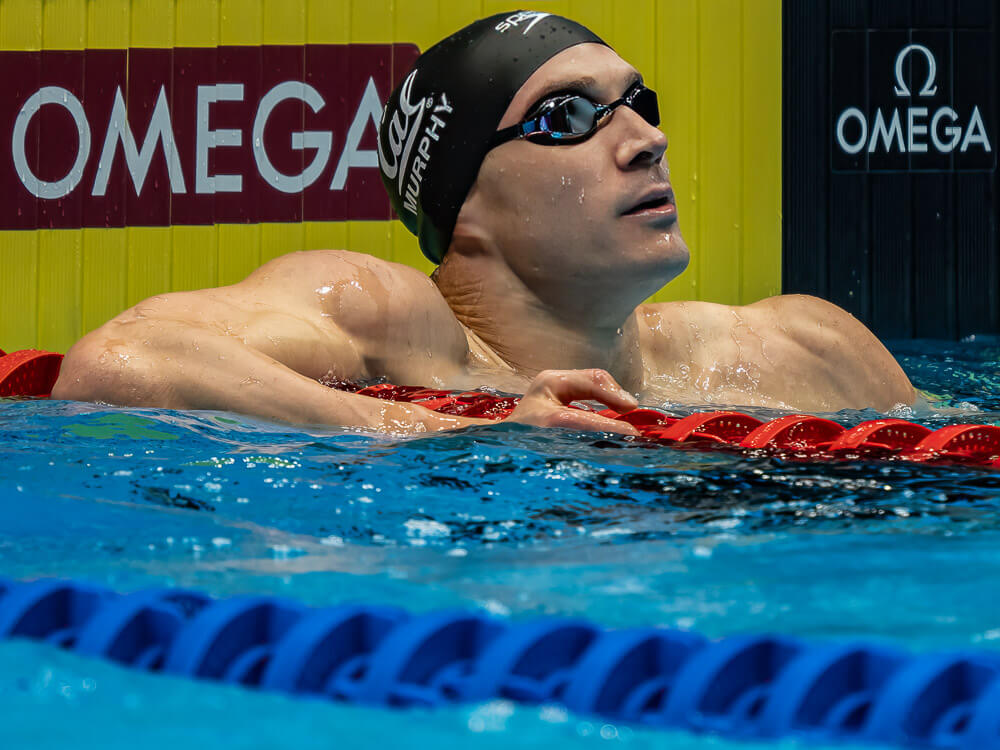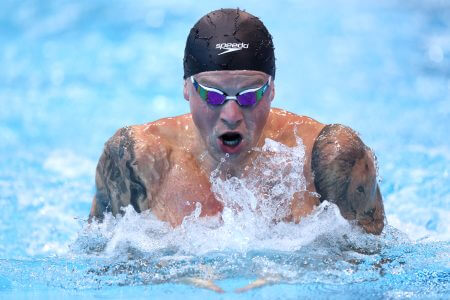World
Olympic Relay Analysis: United States, China Set For Men’s Medley Rematch (Composite Times Included)

Olympic Relay Analysis: United States, China Set For Men’s Medley Rematch
The American men have never lost the 400 medley relay at the Olympics. Only the 1980 Games, boycotted by the U.S. and several allies in response to the Soviet invasion of Afghanistan, saw another country standing atop the medal stand. The Americans continued that streak in 2021 by overcoming a strong challenge from a British team led by Adam Peaty, and the team will likely face another huge challenge at this year’s Paris Games from China.
The U.S. men took gold at last year’s World Championships by 1.80 seconds, but months later, China swam the second-fastest men’s medley relay ever at the Asian Games behind a team of Xu Jiayu, Qin Haiyang, Wang Changhao and Pan Zhanle. The same group will contend to win Olympic gold this year, and several members of the Chinese squad come in with momentum.
China’s Qin Haiyang — Photo Courtesy: Andrea Masini / Deepbluemedia / Insidefoto
Qin swept the breaststroke events at last year’s World Championships, setting the world record over 200 meters while moving to No. 2 all-time in the 50 and 100, while Pan broke the world record in the 100 free in February with a time of 46.80. Xu, meanwhile, is a two-time world champion in the 100 back (2017 and 2019), but butterfly is the obvious weak leg for China, with Wang owning a best time of 51.20 after splitting 50.68 on last year’s Asian-record-setting relay.
The United States is likely counter with a pair of veterans who were part of the gold-medal effort three years ago. Ryan Murphy has actually led off for the Americans in two consecutive Olympics, and he swam the world’s fastest 100 backstroke for 2024 at U.S. Olympic Trials with his time of 52.22. Caeleb Dressel swam his best in the 100 butterfly in Indianapolis, and after going 50.19 in the flat-start event, a return to 49-second territory on the relay is well within his range.
Nic Fink has become the regular American breaststroker in recent years, and although he was off his best time at Trials, he has excelled in international competition in recent years, reaching the medal stand in the 100 breast at both the 2022 and 2023 World Championships before winning gold at a poorly-attended Worlds in February. Finally, Jack Alexy or Chris Guiliano will handle freestyle duties. Both sizzled at Trials (Alexy 47.08, Guiliano 47.25) while Alexy anchored last year’s world-title-winning squad with a time of 47.00.
If China has any hope of knocking off the Americans, Xu and Qin need to build a substantial lead prior to the butterfly leg. That’s what happened in the mixed 400 medley relay at last year’s Worlds, with China’s women able to build upon that initial advantage to secure gold, but in the men’s medley relay final, the U.S. was actually ahead at the halfway point, dooming China’s upset chances.

Great Britain’s Adam Peaty — Photo Courtesy: Morgan Harlow/Aquatics GB
Plenty of other countries can contend for the podium in Paris, but it’s hard to see any of them challenging the U.S. and China because of one or two significant weaknesses. Great Britain is one such country, with a resurgent Peaty on breaststroke and Matt Richards anchoring. The British men finally have a standout backstroker, with Oliver Morgan clocking 52.70 at the British Championships to break Liam Tancock’s long-standing national record, but the Brits struggle on butterfly now, with Joe Litchfield (51.71 in April) as the top option.
Similar story for Australia, with a team featuring breakout breaststroker Sam Williamson and veterans Matt Temple and Kyle Chalmers on the back half but little force on the backstroke leg. Italy, the world champion in this relay in 2022, will have Thomas Ceccon and Nicolo Martinenghi starting things off and Alessandro Miressi anchoring, but like Great Britain, Italy struggles mightily on butterfly.
France is a wild-card in this, with the home nation having Mewen Tomac leading off, 2023 100 fly world champion Maxime Grousset swimming his signature stroke and Florent Manaudou likely anchoring. Leon Marchand is the likely breaststroke choice, and if he can produce a 58-plus split, France will be in this with a chance.
Here are the top composite relays based on 2024 best times:
United States: 52.22 + 58.57 + 50.19 + 47.08 = 3:28.06
China: 52.39 + 58.24 + 51.20 + 46.80 = 3:28.64
Australia: 53.46 + 58.80 + 50.25 + 47.63 =3:30.14
Great Britain: 52.70 + 57.94 + 51.71 + 47.84 = 3:30.19
Italy: 52.43 + 58.84 + 52.00 + 47.72 = 3:30.99
France: 52.88 + 1:00.07 + 50.59 + 47.90 = 3:31.44
Given that both the U.S. and China swam times in the 3:27-low range last year, we have to assume the world record is under threat here, just as with the women’s race. Much of the landscape of this race can and likely will change during the first eight days of Olympic swimming, so the composite relays could look much different by the time day nine rolls around. We’ll see who is swimming in top form and who might be struggling prior to the final men’s race of the Games.
More Olympic Relay Analysis:










